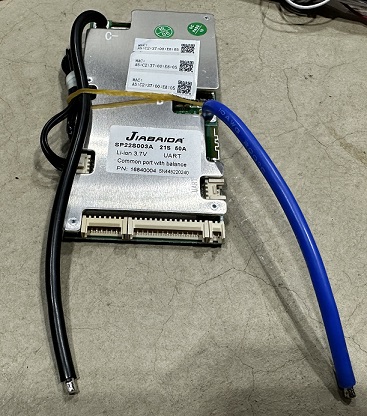
How Does A BMS Balance A Battery?
Table of Contents
A BMS balances a battery by individually monitoring all the cell group voltages and connecting the highest cell group to some sort of energy transfer mechanism. Usually, a BMS will balance a battery by burning off the excess energy that is found in the highest cell group.
More sophisticated and more expensive BMS have something called active balancing, which actually pulls energy from the highest cell and then puts it into the lowest cell group. As you expect, active balancing is much more efficient than its passive counterpart, but both work well to keep lithium-ion batteries in balance.
Does a BMS balance cells when not charging?
Yes. In most cases, a BMS will continue to balance the cells when the battery is not charging. There are some really nice BMS that give you the option as to when balancing occurs. In those BMS, they can be set to only balance when the cells are charging, or only balance when they are discharging. In those fancy BMS, lithium battery balancing can even be set to occur or not occur depending on the voltage level of the cell groups.
In contrast, the most basic, low-cost BMS will always balance the cells regardless of the state of other factors such as cell voltage, discharge or charge state, etc.
[[ aff type=cta ~ bg=`` ~ main=`Guided BMS Picker` ~ second=`Need help picking a BMS that has balancing built in, use the tool found at the link below to get guided to the correct BMS. ` ~ btnText=`BMS Picker` ~ btnLink=`https://cellsaviors.com/bms-picker` ~ align=`center` ]]
Importance of Cell Balancing
There are many reasons the cells in a lithium-ion battery need to be balanced. If a cell group is lower than the others, the BMS will put the battery into safe mode long before the energy in the rest of the cells is used. If a cell group is too high, charging will be cut off before the other cell groups are full. In addition to capacity-related problems, performance is also a concern.
A cell group with a lower voltage will generally have a higher resistance than the other cell groups. Because the groups are in series, the entire load current has to pass into and out of each cell group. This means that your battery will only be as strong as its weakest link.
BMS Balancing Methods
There are several different balancing topologies that all have their own physical circuits that make them work and their own advantages and disadvantages. Most importantly when building a DIY battery pack you want to confirm your BMS provides some type of balancing. Primarily speaking, however, there are two main types:
Resistive Passive Balancing
In this type of balancing system, a high cell group is temporarily connected to a super tiny load resistor built into the BMS. These load resistors typically draw between 50 to 80 milliamps from the high cells to achieve balance.
This energy is wasted, resulting in a lower overall capacity of the battery if that was the only thing at play. Due to the fact that much more capacity would be lost if the cells were out of balance, there is a net gain in capacity.
Active Balancing
Active balancing works completely differently than passive balancing. In an active balance system, the energy in the high cell groups is temporarily stored in a capacitor. After the capacitor is full, it is then connected to the lowest cell group to charge it. This process is repeated continually until the cells are in balance.
Nothing is 100% efficient, so of course this charging and discharging process does lose some energy. It’s important to consider, however, that in passive balancing, 100% of the balance energy is lost.
Not only is active balancing more efficient than passive balancing, but it also works a lot faster. Active balancing currents can be anywhere between 500 and 1000 milliamps!
So, How Does A Battery Balancer Work?
A dedicated active balancer works exactly the same way that a BMS with active balancing works. A BMS is really a collection of several functional circuits that are all controlled by one primary circuit or microcontroller. So, an active balancer is basically the active balancing component of a BMS without anything else.



